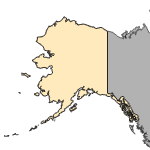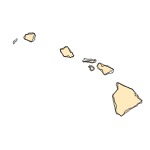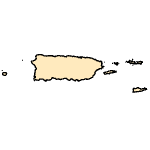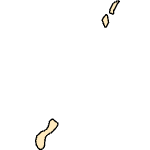Nocomis raneyi
(Bull Chub)
Fishes
Native Transplant |
|
Common name: Bull Chub
Taxonomy: available through
www.itis.gov
Identification: Page and Burr (1991); Jenkins and Burkhead (1994). Maximum size: 32 cm.
Native Range: Atlantic Slope drainages from James River, Virginia, to Neuse River, North Carolina (Page and Burr 1991).



|

Alaska |

Hawaii |

Puerto Rico &
Virgin Islands |

Guam Saipan |
Hydrologic Unit Codes (HUCs) Explained
Interactive maps: Point Distribution Maps
Nonindigenous Occurrences:
Table 1. States with nonindigenous occurrences, the earliest and latest observations in each state, and the tally and names of HUCs with observations†. Names and dates are hyperlinked to their relevant specimen records. The list of references for all nonindigenous occurrences of Nocomis raneyi are found here.
Table last updated 1/15/2026
† Populations may not be currently present.
Means of Introduction: Unknown; probable bait bucket release.
Status: Established in North Carolina and Virginia.
Impact of Introduction: The spread of Bull Chub in the James drainage may be linked to the apparent disappearance of the closely-related river chub N. micropogon from much of the drainage during 1970s and 1980s (Jenkins and Burkhead 1994).
References: (click for full references)
Hocutt, C.H., R.E. Jenkins, and J.R. Stauffer, Jr. 1986. Zoogeography of the fishes of the central Appalachians and central Atlantic coastal plain. Pages 161-212 in Hocutt, C.H., and E.O. Wiley, eds. The zoogeography of North American freshwater fishes. John Wiley and Sons. New York, NY.
Jenkins, R.E., and N.M. Burkhead. 1994. Freshwater Fishes of Virginia. American Fisheries Society, Bethesda, MD.
Jenkins, R.E., E.A. Lachner, and F.J. Schwartz. 1972. Fishes of the central Appalachian drainages: their distribution and dispersal. Pages 43-117 in The distributional history of the biota of the Southern Appalachians -- Part III. Virginia Polytechnic Institute and State University. Blacksburg, VA.
Menhinick, E.F. 1991. The Freshwater Fishes of North Carolina. North Carolina Wildlife Resources Commission.
Other Resources:
FishBase Summary
Author:
Nico, L.
Revision Date: 12/5/2003
Peer Review Date: 12/5/2003
Citation Information:
Nico, L., 2026, Nocomis raneyi Lachner and Jenkins, 1971: U.S. Geological Survey, Nonindigenous Aquatic Species Database, Gainesville, FL, https://nas.er.usgs.gov/queries/FactSheet.aspx?speciesID=578, Revision Date: 12/5/2003, Peer Review Date: 12/5/2003, Access Date: 1/15/2026
This information is preliminary or provisional and is subject to revision. It is being provided to meet the need for timely best science. The information has not received final approval by the U.S. Geological Survey (USGS) and is provided on the condition that neither the USGS nor the U.S. Government shall be held liable for any damages resulting from the authorized or unauthorized use of the information.